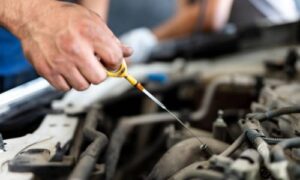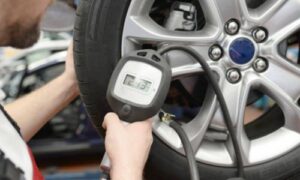Pads for Brakes are a critical component of your vehicle’s braking system. They are essential for safety, as they help bring your car to a stop. Quality brake pads ensure effective braking, providing the stopping power needed in various driving conditions. Inferior pads can lead to longer stopping distances and increased wear on other brake components.
Using high-quality brake pads reduces the risk of brake failure, which is crucial for avoiding accidents. Good brake pads also improve the overall performance of your vehicle. They provide a smooth and quiet braking experience, enhancing your driving comfort.
Investing in quality brake pads can save you money in the long run. They tend to last longer and perform better than cheaper alternatives. This means fewer replacements and less frequent maintenance, which can be costly. Additionally, high-quality brake pads are designed to be more heat-resistant and wear-resistant, which protects your brake rotors and extends their lifespan.
Types of Brake Pads
Several types of brake pads are available, each with advantages and disadvantages. Understanding these types can help you decide when it’s time to replace your brake pads.
- Organic Brake Pads: Made from glass, rubber, and resins. These pads are softer and produce less noise. They are also the most affordable option. However, they wear out faster and are less effective in high-performance or heavy-duty applications.
- Semi-Metallic Brake Pads: These pads contain metal fibres, which provide better heat resistance and improved durability. They offer good performance and are suitable for most driving conditions. However, they can be noisier and produce more brake dust.
- Ceramic Brake Pads: Known for their longevity and performance, ceramic pads are made from ceramic fibres and other materials. They offer excellent stopping power, produce less noise, and create minimal brake dust. However, they are usually the most expensive option.
- Low-Metallic NAO Brake Pads: These pads have a small amount of copper or steel, which helps with heat transfer and braking performance. They are noisier and produce more brake dust than organic pads but offer better durability and stopping power.
Signs You Need New Brake Pads
Knowing when to replace your brake pads is crucial for maintaining your vehicle’s safety and performance. Here are some common signs that it’s time to change your pads for brakes:
- Squeaking or Squealing Noise: This noise indicates that the brake pads are worn out and need replacing.
- Grinding Sound: If you hear a grinding noise, it means the brake pads are completely worn down and the brakes’ metal parts are rubbing against each other. This can damage the rotors.
- Reduced Braking Performance: If your car takes longer to stop or the brake pedal feels soft or spongy, it’s likely time to replace the brake pads.
- Vibration When Braking: Vibrations or pulsations when you apply the brakes can indicate uneven wear or warped brake rotors, often due to worn-out brake pads.
- Brake Warning Light: Some vehicles have a warning light that will illuminate when it’s time to replace the brake pads.
How to Choose the Right Brake Pads
Choosing the right brake pads for your vehicle involves considering several factors. Here are some tips to help you make the best choice:
- Driving Style: If you drive aggressively or frequently in heavy traffic, consider high-performance pads like ceramic or semi-metallic. For everyday driving, organic pads might be sufficient.
- Vehicle Type: Heavy vehicles like trucks and SUVs require more robust brake pads, such as semi-metallic or ceramic, to handle the extra weight.
- Climate: In areas with extreme temperatures, you need pads that can withstand heat and cold. Semi-metallic and ceramic pads are generally more heat-resistant.
- Budget: While high-quality brake pads can be more expensive, they offer better performance and longevity, which can save money in the long term.
- Brand and Reviews: Research different brands and read customer reviews. Trusted brands with positive feedback are often a safer choice.
Best Brands for Brake Pads in the USA
When it comes to brake pads, quality and reliability are paramount. Here are some of the best brands for brake pads available in the USA, along with links to their websites:
1. Akebono
Akebono is a leading brand known for its high-quality ceramic brake pads. They offer excellent braking performance, reduced noise, and minimal brake dust. Akebono pads are a popular choice for both OEM replacements and aftermarket upgrades.
- Website: Akebono Brake Corporation
2. Brembo Pads for Brakes
Brembo is renowned for its high-performance brake components, often used in racing and sports cars. Its brake pads are designed to deliver exceptional stopping power and durability, making them ideal for those seeking top-tier performance.
- Website: Brembo Official Website
3. Bosch
Bosch offers a wide range of brake pads suitable for various vehicles. Their QuietCast™ Premium Disc Brake Pads are known for their quality, performance, and quiet operation. Bosch brake pads are a reliable choice for everyday driving.
- Website: Bosch Auto Parts
4. Wagner
Wagner is a trusted brand in the automotive industry, known for its ThermoQuiet® brake pads. These pads provide excellent braking performance, noise reduction, and durability. Wagner offers options for both domestic and import vehicles.
- Website: Wagner Brake
5. EBC Brakes
EBC Brakes specializes in high-performance and motorcycle brake components. They offer a variety of brake pad formulations, including organic, semi-metallic, and ceramic. EBC pads are known for their quality and performance in demanding conditions.
- Website: EBC Brakes
Installing Pads for Brakes
Installing brake pads is a task that can be done at home with the right tools and knowledge. However, it’s cit’sal to follow the correct procedure to ensure safety. Here’sHere’sic guide:
- Gather Tools and Materials: You’llYou’lla jack, lug wrench, C-clamp, brake cleaner, and the new brake pads.
- Lift the Vehicle: Use the jack to lift the car and remove the wheel.
- Remove the Caliper: Unscrew the calliper bolts and carefully remove the calliper, being careful not to damage the brake line.
- Take Out Old Pads: Remove the old brake pads from the calliper bracket.
- Install New Pads: Place the new brake pads into the calliper bracket. If necessary, compress the calliper piston with the C-clamp.
- Reassemble: Reattach the caliper and wheel. Lower the vehicle and test the brakes before driving.
Maintaining Your Brake Pads
Regular maintenance is key to extending the life of your brake pads and ensuring your vehiclvehicle’sy. Here are some maintenance tips:
- Regular Inspections: Check your brake pads every few months for signs of wear.
- Clean Brake Components: Use brake cleaner to remove dust and debris from the brake components. This helps maintain braking efficiency.
- Brake Fluid: Keep an eye on your brake fluid level. Low brake fluid can affect the performance of your brake pads.
- Smooth Driving: Avoid aggressive driving habits like hard braking and rapid acceleration. These can cause excessive wear on your brake pads.
- Replace When Necessary: Don’t Don’t replacing worn-out brake pads. Doing so can damage other braking components and reduce your vehiclvehicle’sy.
Common Pads for Brakes Myths
There are many myths surrounding brake pads. It’s iIt’stant to separate fact from fiction to make informed decisions about your pads for brakes.
- Myth: All pads for brakes are the same, but that is not true. Different materials and designs affect performance, durability, and noise levels.
- Myth: Brake Pads Only Need Replacing When They Make Noise: While noise can indicate wear, not all brake pads have wear indicators. Regular inspections are essential.
- Myth: Ceramic Pads Are Always Better: Ceramic pads are excellent but may not suit all vehicles or driving styles. Consider your specific needs.
- Myth: New Brake Pads Don’t Don’ta Break-In Period: Most new brake pads require a break-in period, known as bedding, to ensure optimal performance.
- Myth: Brake Pad Replacement is Always Expensive: While quality pads can be costly, they often last longer and perform better, making them cost-effective.
Final Note on Pads for Brakes
Brake pads are essential for your vehiclvehicle’sy and performance. Choosing the right pads, knowing when to replace them, and understanding how to maintain them can ensure your car stays in top condition. Regular inspections and quality maintenance can save you money and keep you safe on the road. Don’t Don’took the importance of high-quality brake pads; they are vital to your vehiclvehicle’sy and reliability.






